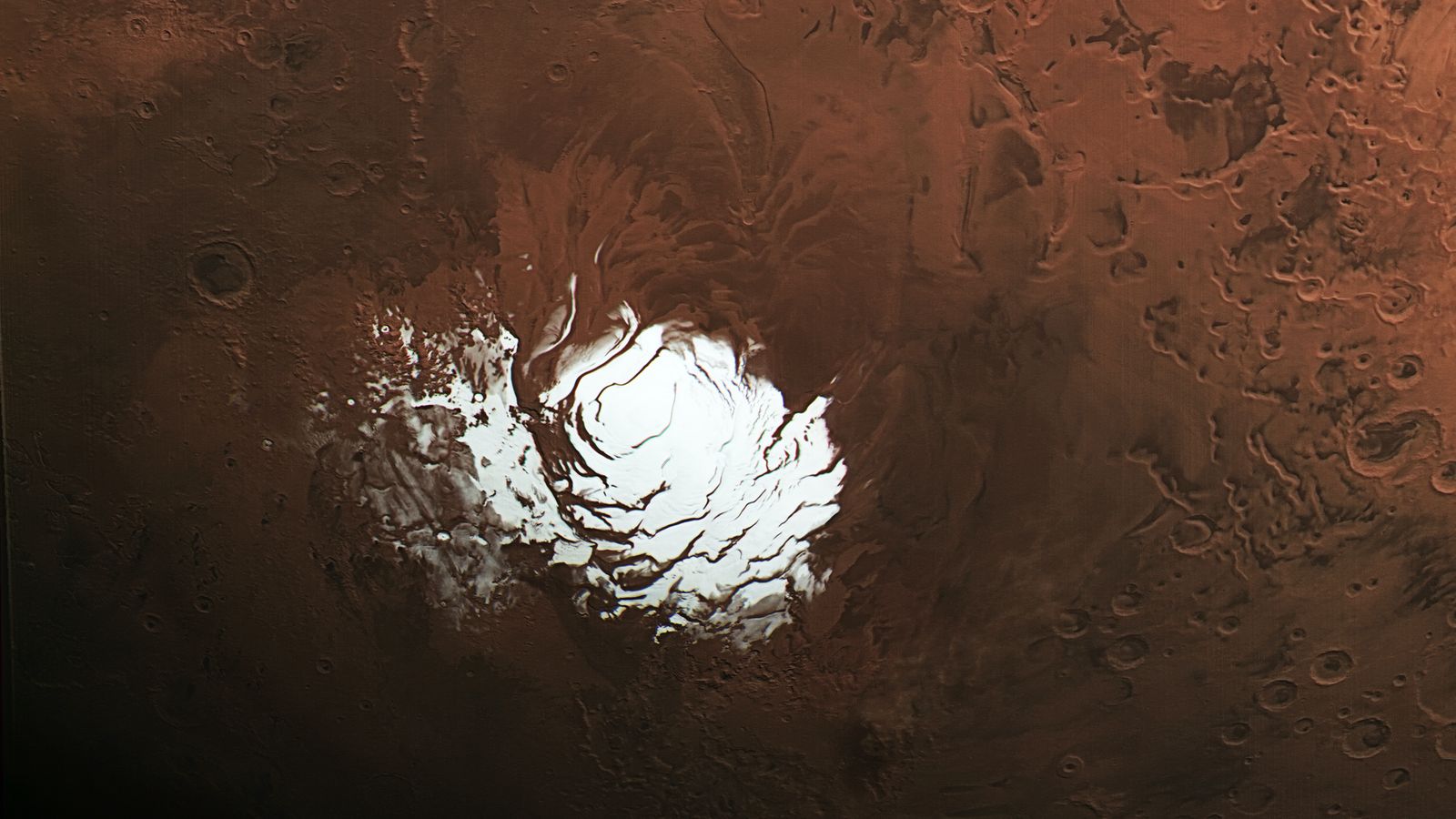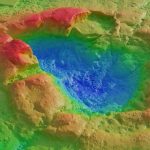Liquid water previously seen under the surface of Mars may be an illusion, a new study suggests.
The liquid was supposedly spotted beneath the planet’s ice-covered south pole in 2018.
Scientists saw bright reflections and assumed they were looking at water under the polar cap.
But, new research by the University of Texas says the temperature and pressure on the planet make it unlikely that water could exist there.
Cyril Grima, a planetary scientist at the university’s Institute for Geophysics said: “For water to be sustained this close to the surface, you need both a very salty environment and a strong, locally generated heat source, but that doesn’t match what we know of this region.”
The scientists suggest the sighting could have been volcanic rock buried under ice, and not water after all.
The researchers tested their theory by seeing how the planet would appear if was looked at through a mile of ice.
Mars Perseverance Rover: Images confirm Jezero crater was ancient lake – and may hold traces of life, say scientists
Mars was doomed to become a barren lifeless planet from the beginning, says new study
Women in science: Aiming for the stars – but for how long?
This allowed them to compare features across the entire planet with those under the polar cap.
Mr Grima noticed the same bright reflections like those seen in 2018, but they were scattered across the planet, matching the location of volcanic plains.
Lava flows, rich in iron, can leave behind rocks with similar reflections, which can be mistaken for water.
While this may seem like disappointing news, plenty of ice can be found on Mars, and many scientists are excited about further developments in our understanding of the planet.
Geophysicist at York University Isaac Smith said the “beauty” of the findings is that “it gives us really precise places to go look for evidence of ancient lakes and riverbeds and test hypotheses about the wider drying out of Mars’s climate over billions of years.”
Mr Smith believes the bright reflections are due to a type of clay made when rock erodes in water.
The study, published in the journal Geophysical Research Letters, is based on three years of data from Marsis, a radar instrument aboard the European Space Agency’s Mars Express.
Images of the planet from a NASA rover last year confirmed there was once a lake on the surface which was fed by a small river about 3.7 billion years ago.
It is hoped the sediments found within the Jezero crater could hold traces of life.






















